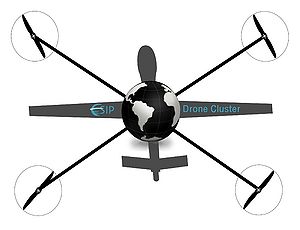Difference between revisions of "Drone Cluster"
From Earth Science Information Partners (ESIP)
| Line 5: | Line 5: | ||
| | | | ||
|'''Get Involved''' | |'''Get Involved''' | ||
| − | * '''Email List:''' [http://www.lists.esipfed.org/mailman/listinfo/esip- | + | * '''Email List:''' [http://www.lists.esipfed.org/mailman/listinfo/esip-drone esip-drone] ([http://lists.esipfed.org/pipermail/esip-drone/ Drone List]) |
*To join the '''Drones telecon''' from your computer, tablet or smartphone, click: | *To join the '''Drones telecon''' from your computer, tablet or smartphone, click: | ||
Revision as of 11:29, July 28, 2016

|
Get Involved
|
Resources | |
Activities
|
News
|
Why Unmanned Aerial Systems [UASs]?
In response to a growing interest in the use of drones (unmanned aerial systems (UAS)) in the earth sciences, an ESIP cluster formed this year to focus on their development and use. While there are currently various challenges around using UAS, the existing and anticipated advantages mean that firstly the domain is swelling with innovation, and secondly that UASs are expected to become a standard piece of field equipment for scientists.
As a new cluster we are welcoming participants and input as to how we can best operate within ESIP.
UAS advantages over traditional approaches:
- Content on demand/currency of data
- Cost savings (10% of traditional methods)
- High resolutions possible (2.5cm)
- Turn around time - hours not months or years
- Improved Safety
- Lowered impact on the environment being monitored
- All of the above mean an increased ease of observation repeatability
Challenges:
- Steep learning curve
- Need for more reduced weight instrumentation
- Need for new data management and processing techniques, particularly open source options
- Regulations